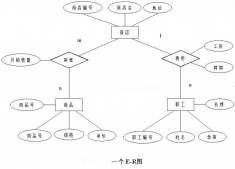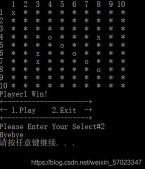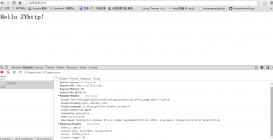1、打开cygwin,进入home目录,home目录在WINDOWS系统的cygwin安装目录映射为home目录。
2、首先,在home目录中新建文件夹,在文件夹中放置如下内容的test1.l
|
1
2
3
4
5
6
7
8
9
10
11
12
13
14
15
16
17
18
19
20
21
22
23
24
25
26
27
28
29
30
31
|
/*统计字数*/%{int chars=0;int words=0;int lines=0;%}%%[a-zA-Z]+ {words++;chars+=strlen(yytext);}\n {chars++;lines++;}. {chars++;}%%main(int argc,char**argv){ yylex(); printf("%d%d%d\n",lines,words,chars);} |
然后调用flex生成词法分析器
|
1
2
3
4
5
6
7
8
9
10
11
12
13
14
15
|
Administrator@2012-20121224HD /home/flexlinux$ cd /homeAdministrator@2012-20121224HD /home$ cd flexlinuxAdministrator@2012-20121224HD /home/flexlinux$ flex test1.lAdministrator@2012-20121224HD /home/flexlinux$ |
可以看到目录中的lex.yy.c就是刚生成的C源码,可分析词法。
|
1
2
3
4
5
|
Administrator@2012-20121224HD /home/flexlinux$ lslex.yy.c test1.l |
二、flex和bison联合工作
1 、我们开始构造一个计算器程序。
创建flex代码
|
1
2
3
4
5
6
7
8
9
10
11
12
13
14
15
16
17
18
19
20
21
22
23
24
25
26
27
28
29
30
31
32
33
34
35
36
37
38
39
40
41
42
43
44
45
46
47
48
49
50
51
52
53
54
55
56
57
58
59
60
61
62
63
64
65
|
/*计算器*/%{enum yytokentype{ NUMBER=258, ADD=259, SUB=260, MUL=261, DIV=262, ABS=263, EOL=264};int yylval;%}%%"+" {return ADD;}"-" {return SUB;}"*" {return MUL;}"/" {return DIV;}"|" {return ABS;}[0-9]+ {yylval=atoi(yytext);return NUMBER;}\n {return EOL;}[ \t] {/*空白忽略*/}. {printf("非法字符 %c\n",*yytext);}%%main(int argc,char**argv){ int tok; while(tok=yylex()){ printf("%d",tok); if (tok==NUMBER) printf("=%d\n",yylval); else printf("\n"); }} |
2、编译
|
1
2
3
4
5
6
7
|
Administrator@2012-20121224HD /home/flexlinux$ flex test2.lAdministrator@2012-20121224HD /home/flexlinux$ gcc lex.yy.c -lfl |
3、运行
|
1
2
3
4
5
6
7
8
9
10
11
12
13
14
15
16
17
18
19
20
21
22
23
24
25
26
27
28
29
30
31
32
33
34
35
36
37
|
Administrator@2012-20121224HD /home/flexlinux$ ./a- 12 66260258=12258=66264Administrator@2012-20121224HD /home/flexlinux$ ./a/ 56 2 + |32262258=56258=2259263258=32264Administrator@2012-20121224HD /home/flexlinux$ |
(2)计算器的BISON程序
|
1
2
3
4
5
6
7
8
9
10
11
12
13
14
15
16
17
18
19
20
21
22
23
24
25
26
27
28
29
30
31
32
33
34
35
36
37
38
|
%{#include <stdio.h>%}%token NUMBER%token ADD SUB MUL DIV ABS%token EOL%%calclist:/**/ |calclist exp EOL{printf ("=%d\n",$2);} ;exp:factor {$$ = $1;} |exp ADD factor{$$=$1+$3;} |exp SUB factor{$$=$1-$3;} ;factor:term {$$=$1;} |factor MUL term{$$=$1*$3;} |factor DIV term{$$=$1/$3;} ;term:NUMBER {$$=$1;} |ABS term {$$=$2>=0?$2:-$2;} ;%%main(int argc,char **argv){yyparse();}yyerror(char *s){ fprintf(stderr,"error:%s\n",s);}$ bison -d test2.yt$ lstest2.tab.c test2.tab.h test2.y test2.y~ |
然后,修改刚才的flex文件,将其命名为test21.l
test2.tab.h中包含了记号编号的定义和yylval的定义,因此,将其第一部分的相关定义删除,并改为:
/计算器/
%{
#include "test2.tab.h"
%}
然后删除,其第三部分的main函数。
最后,进行编译。
|
1
2
3
4
5
|
bison -d test2.yflex test21.lgcc test2.tab.c lex.yy.c -lfl |
可以测试一下
|
1
2
3
4
5
6
7
8
9
|
root@myhaspl:~# ./a.out12 + 36 * 2=8412 / 6 + 2 * 3=8 |
(2)扩充计算器
加入对括号和注释的支持,
首先修改flex文件,在第二部分加入更多的词法规则(对于注释直接忽略):
"(" {return LEFTBRACKET;}
")" {return RIGHTBRACKET;}
"#". /忽略注释*/
然后,修改bison文件,在第二部分加入更多的语法规则:
term:NUMBER {$$=$1;}
|ABS term {$$=$2>=0?$2:-$2;}
|LEFTBRACKET exp RIGHTBRACKET {$$=$2;}
;
我们的注释以“#”表示
测试结果
|
1
2
3
4
5
6
7
8
9
10
11
12
13
14
15
16
17
18
19
20
21
22
|
myhaspl@myhaspl:~/flex_bison/2$ makebison -d calculator.yflex calculator.lgcc calculator.tab.c lex.yy.c -lflmyhaspl@myhaspl:~/flex_bison/2$ lsa.out calculator.tab.c calculator.y makefilecalculator.l calculator.tab.h lex.yy.cmyhaspl@myhaspl:~/flex_bison/2$ ./a.out12-36*10/(1+2+3)#compute=-48^Cmyhaspl@myhaspl:~/flex_bison/2$ |
前面都是以键盘输入 的方式进行计算器运算,我们下面以文件方式提供给该解释器进行计算,首先,将flex文件改为(将其中中文去除,然后对于非法字符的出现进行忽略):
|
1
2
3
4
5
6
7
8
9
10
11
12
13
14
15
16
17
18
|
%{#include "calculator.tab.h"%}%%"+" {return ADD;}"-" {return SUB;}"" {return MUL;}"/" {return DIV;}"|" {return ABS;}"(" {return LEFTBRACKET;}")" {return RIGHTBRACKET;}"#". /comment/[0-9]+ {yylval=atoi(yytext);return NUMBER;}\n {return EOL;}[ \t] /blank/. /invalid char/% |
接着,改bison文件,加入对文件的读写
|
1
2
3
4
5
6
7
8
9
10
11
12
13
14
15
16
17
18
19
20
21
22
23
24
25
26
27
28
29
30
31
32
33
34
35
36
37
38
39
40
41
42
43
44
45
46
47
48
49
50
51
52
53
|
%{#include <stdio.h>%}%token NUMBER%token ADD SUB MUL DIV ABS LEFTBRACKET RIGHTBRACKET%token EOL %%calclist:/**/ |calclist exp EOL{printf ("=%d\n",$2);} ; exp:factor {$$ = $1;} |exp ADD factor{$$=$1+$3;} |exp SUB factor{$$=$1-$3;} ; factor:term {$$=$1;} |factor MUL term{$$=$1*$3;} |factor DIV term{$$=$1/$3;} ;term:NUMBER {$$=$1;} |ABS term {$$=$2>=0?$2:-$2;} |LEFTBRACKET exp RIGHTBRACKET {$$=$2;} ;%%main(int argc,char **argv){int i;if (argc<2){ yyparse();}else{ for(i=1;i<argc;i++) { FILE *f=fopen(argv[i],"r"); if (!f){ perror(argv[i]); return (1); } yyrestart(f); yyparse(); fclose(f); }}}yyerror(char *s){ fprintf(stderr,"error:%s\n",s);} |
最后 测试一下
|
1
2
3
4
5
6
7
8
|
root@myhaspl:~/test/3# makebison -d calculator.yflex calculator.lgcc calculator.tab.c lex.yy.c -lflroot@myhaspl:~/test/3# ./a.out mycpt1.cpt mycpt2.cpt=158=-8root@myhaspl:~/test/3# |
其中两个CPT文件内容类似 为:
12*66/(10-5)
我们接着完善这个计算器程序,让算式能显示出来,修改calculator.l
通过加入printf语句,打印词法分析器解析到的字符。比如 :
..................
[0-9]+ {yylval=atoi(yytext);printf("%d",yylval);return NUMBER;}
\n {return EOL;}
[ \t] /blank/
. /invalid char/
%%
然后编译执行。
|
1
2
3
4
5
6
7
8
9
10
11
12
13
14
15
16
17
18
19
20
21
|
root@myhaspl:~/test/4# makebison -d calculator.yflex calculator.lgcc calculator.tab.c lex.yy.c -lflroot@myhaspl:~/test/4# ./a.out12+6612+66=78^Croot@myhaspl:~/test/4# ./a.out mycpt1.cpt mycpt2.cpt 12*66/(10-5)=15877/(10+1)-15=-8 |
接下来加上读取的行号,将结果的显示更加人性化
flex文件要改:
\n {printf("<line:%4d>",yylineno);yylineno++;return EOL;}
然后,bison文件也改:
calclist:/**/
|calclist exp EOL{printf ("the result is:%d\n",$2);}
;
最后 ,编译运行测试一下。
|
1
2
3
4
5
6
7
8
9
10
|
root@myhaspl:~/test/4# makebison -d calculator.yflex calculator.lgcc calculator.tab.c lex.yy.c -lflroot@myhaspl:~/test/4# ./a.out mycpt1.cpt mycpt2.cpt1266/(10-5)<line: 1>the result is:15812/22-8<line: 2>the result is:-877(6-2)<line: 3>the result is:30877/(10+1)-15<line: 4>the result is:-8root@myhaspl:~/test/4# |















